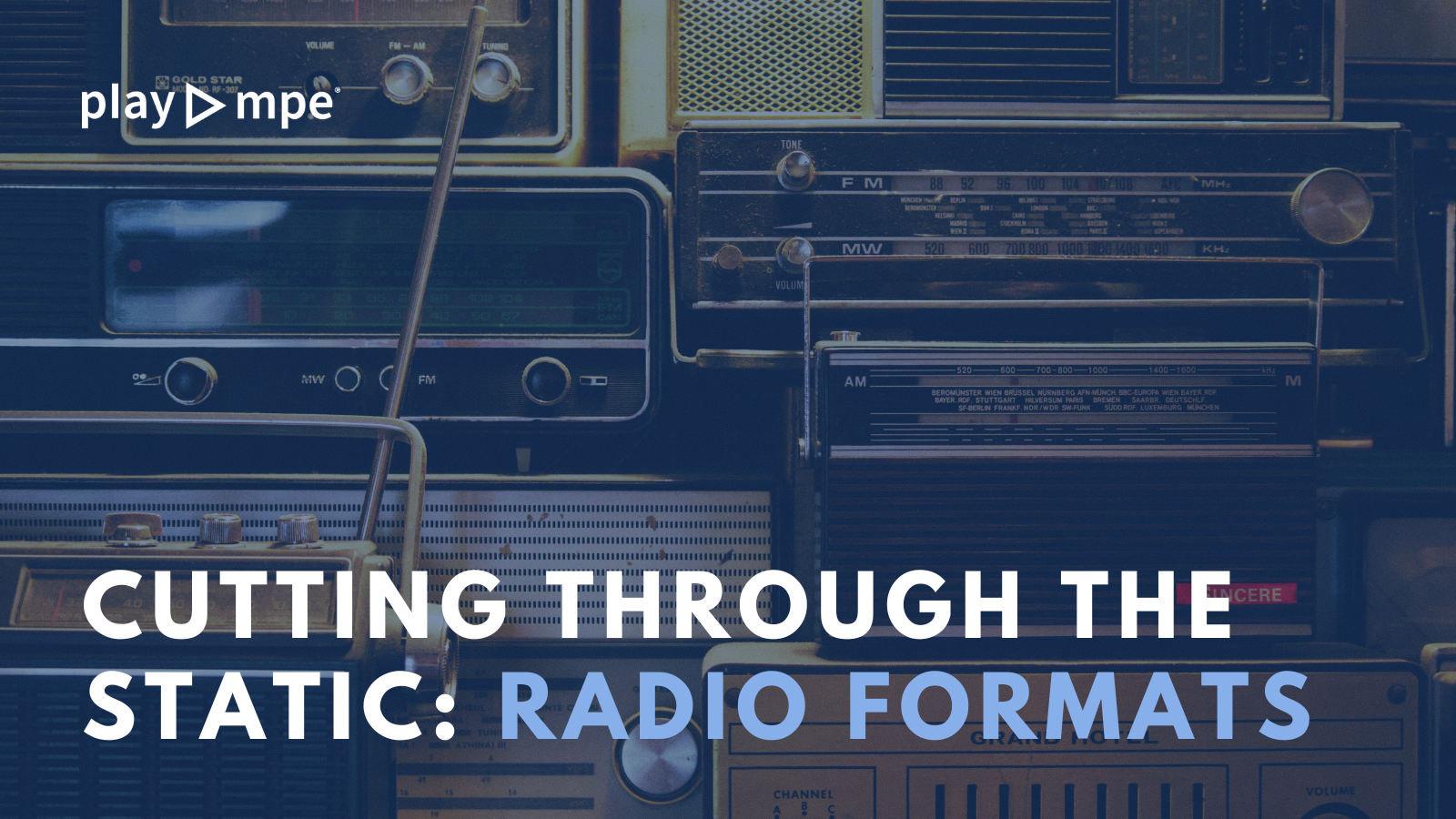What are radio formats?
So you’re keen to get on the radio…but you don’t know where to start. That’s totally fair! What in the world is a “radio format”? What does “AAA” and “AC” mean? How can you know where your tune fits into the mix? Luckily for you, it’s a lot simpler than it seems.
Radio Formats define the overall content that a station broadcasts. These are typically organized by genre (like Country, Jazz, Hip-Hop, etc) or by station type (such as Community or College). Radio formats are also influenced by things like listener age, region, and what other stations are playing nearby. It’s important to gauge where your music has the best chance for airplay before targeting music directors. A Top 40/Pop song is certainly unlikely to get airplay from a Classical music station, right?
Let’s break things down
Many formats speak for themselves, like Country, Rock, Jazz, Metal, Alternative etc. But there are a few that tend to confuse people with their ambiguous names:
Triple A –or AAA radio– stands for “adult album alternative.” Just as the name suggests, Triple A radio is geared towards adult listeners. This format has a broader, more diverse playlist than most other formats. Musical selection tends to be on the fringe of mainstream pop and rock. It also includes an array of other music genres including indie rock, Americana, pop rock, classic rock, alternative rock, new wave, alternative country, jazz, folk, world music, jam band and blues.
Artists you might find spinning on Triple A stations include The 1975, Adele, Death Cab For Cutie, Brandi Carlile
AC radio (Adult Contemporary) air-time is brimming with music’s biggest artists – that fall into the soft-rock, pop-rock and pop realm. AC radio will predominantly play tried and true hits from the mainstream.
Artists you might find on AC radio include Adele, Ed Sheeran, P!nk, Justin Bieber and Taylor Swift
Hot AC radio generally serves as a middle ground between Top 40 and AC. They play a wide range of current popular music that appeals towards the 18–54 age group. You’ll mostly find uptempo, chart topping hits here!
Think Adele, Maroon 5, Taylor Swift, Shawn Mendes, P!nk
Rhythmic, also known as Rhythmic Top 40, Rhythmic CHR or rhythmic crossover, is a primarily American music radio format that includes a mix of EDM, upbeat rhythmic pop, hip hop and upbeat R&B hits.
Current artists you’ll hear: SZA, Doja Cat, The Weeknd, Post Malone
Move over, mainstream!
Perhaps your music needs a bit more flexibility in the genre department. Whether you are an eclectic cross-over artist or happen to have an incredible song that falls within a hyper specific niche sub-genre – an open format might be right for you!
Non-Commercial radio stations don’t generate revenue from advertising but instead rely on public funding and listener support. Non-Commercial stations are also often NPR affiliates. Free from the constraints of being tied to advertising money, these stations are able to take a chance on smaller or developing artists instead of sticking to the mainstream. The genres that succeed at Non-Comm are varied, but some of the format’s core artists are Spoon, The National, St. Vincent, Black Keys, and Jack Johnson.
College radio is run by students on college or university campuses, and includes some community-based radio stations. Unlike mainstream stations, College playlists focus on a wide variety of genres and styles rather than top hits. With a strong, community-centered spirit, these stations can be a great starting point for up-and-comers in the music scene. These stations may carry advertising, however content is widely spaced and not the main source of station funding – this advertising is typically local businesses.
It’s go time…
Now you’ve got the basics. That wasn’t so bad was it?
If you think you could use a bit more guidance, Play MPE has real-life industry experts on the team who are happy to lend their ears and suggest the best formats for your sound. We have just the radio format list for you! Sign up for Caster to get started on your next release and send your music to the right stations.
Stay tuned for more posts in this series where we dive deeper into radio formats by music genre so you can get the most out of every radio promo!
